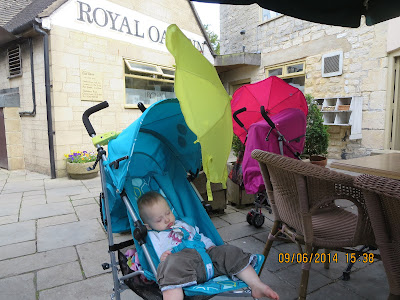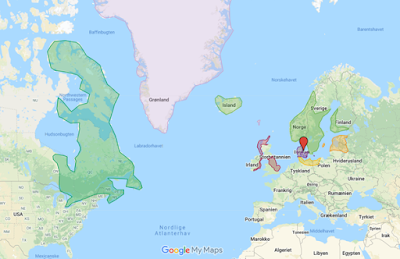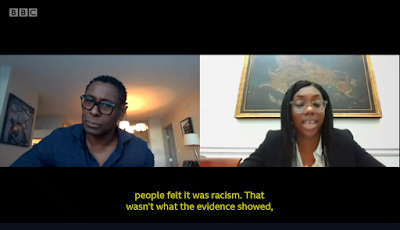10:30 It's a chilly, raw kind of a day, but Lois and I go for a walk over to the Racecourse, passing the old Royal Oak pub, where we spent many relaxing hours in happier times - today the pub is looking rather sad: temporarily closed because of the latest lockdown - sob sob!!!
Lois showcases her front garden display of daffodils and
pruned roses on our way out for our walk
we pass the sadly shut Royal Oak pub
flashback to 2014: the Royal Oak pub in happier times -
we take our twin grandchildren there for a beer and some crisps (just for me haha!)
Now they're both 7 years old and living 9,000 miles away in Perth, Australia - sob sob!!!!
the twins as they are today - eating a British-style Christmas dinnerunder the scorching Australian sun - December 25th 2020
11:30 We come home and warm up with a cup of coffee and a custard cream biscuit.
I look at my smartphone. Steve, our American brother-in-law, has sent me an interesting web article about Slime Mould from iflscience.com .
Slime moulds
can display what might be considered a form of "intelligence". If
confronted with a maze towards a food source, they can "work out" the shortest and easiest path. If presented with a variety of food sources, they
identify the most rewarding and prioritize it. In a new study, scientists have now demonstrated that slime
moulds appear to possess something that resembles memory. While on the hunt,
they are able to remember the location of the food and then retrieve
information about the environment to return for another time.
Researchers’ observations showed that the
slime mould released a trail of chemicals after leaving a location with food.
This chemical softens the tubes in the network of the slime mould, causing them
to grow in diameter while other tubes shrink. Using theoretical modelling, the
researchers found that this softening of the tubes reorganizes the network and reorients the
organism towards the direction of where food was once found.
In other words, the location of the food is
imprinted within the network's architecture, which acts as a means
to store and recover the information.
What a crazy world we live in !!! I myself have some sort of brain, but I have tremendous difficulty remembering where my previous food sources are, all the ones that I have used before, and I often spend fruitless minutes searching the fridge before eventually giving up - my god!
I have to confess that I myself have never really liked slime that much - and we try and keep it out of the house as much as possible.
Some slime can be quite aggressive too. There was a Canadian children's TV show on the Nickelodeon Channel that we used to watch when we lived in the US 1982-85: in the show green slime became a bit of a hazard, to put it mildly.
slime - a nasty aggressive substance, as show on Nickelodeon's
"You Can't Do That on Television"
11:30 I continue to look at my smartphone. Today seems to be, for some reason, a day when lots of stimulating debates are taking place online. Spring is in the air, intellectually speaking, if not meteorologically haha!
Following the "slime mould" furore, I happen to see a thoughtful article on the Danish quora forum site by former Cuba resident, Simon Dayne, who tries to answer one of Europe's greatest unanswered questions: what would Denmark look like today if it hadn't lost any of its former territories?
Simon starts his controversial treatment of the subject with a couple of interesting maps, and as they say, a picture is worth a thousand words:
two maps of the potential maximum spread of the Danish Empire
Simon doesn't say this explicitly, but I'm guessing that the different colours assigned to the various Danish possessions on the map correspond to the historical time period when each was acquired. He admits that the exact extent of the Danish Empire in Canada is somewhat open to discussion, but I'm going to let that one slide: there's no denying that large parts of Sweden, Norway, Iceland, Greenland, North America, the British Isles, Germany, Poland, Latvia and Estonia have at one time or another been Danish.
Fascinating stuff!
The "Danish empire" may be a bit reduced as we look at it today - but the reduction in the British Empire is forecast to be even more significant according to a recent study, reported on the influential American news website, Onion News.

LONDON—Projecting from the rate of territorial decline over
the last two centuries, experts predicted Thursday that the British Empire will
be reduced to an area of eight acres surrounding Buckingham Palace by as early
as 2050, according to Oxford University political science professor Patrick
Withers
“According to even the most generous estimates, the England
of 2050 will no longer include the British Museum, most of the River Thames, or
the Houses of Parliament, which will present extraordinary difficulties in governance.”
Withers went on to say that within 100 years, the British
Empire may be reduced to the Queen’s throne room and part of the hallway
outside.
This reduction, however, will almost certainly be a blessing in many ways to the Queen herself, Lois and I feel: like us she's getting on in age, I'm not sure how old she'll be in 2050, but we are already starting to think about downsizing ourselves.
downsizing can mean an easier life, for all old people, and not just for the Queen!
After all, small is beautiful, is it not?!
20:00 Lois is too tired tonight to take part in her sect's weekly Bible Class on zoom, so we both settle down on the couch to watch a bit of TV, a documentary entitled "Why is Covid Killing People of Colour?"
Fascinating stuff, with lots of stats, which Lois and I like, but the programme also contains a mix of anecdotal evidence, which we're not so sure about - the jury's still out on those bits. Also we have to be a bit careful because some of the stats refer to non-whites in general, and others to Afro-Caribbean people only.
Although non-whites make up only 14% of the UK's population, they account for 34% of all Covid patients admitted to intensive care. Non-whites are also more likely to die of it, in the case of black patients, 3 times more likely than white patients.
black COVID sufferers are 3 times as likely to die as whites
Are the reasons biological or environmental/social? Although black people are more likely to suffer from Vitamin D deficiency, this is also a problem for white people living in the UK, a country which doesn't see much powerful sunlight between September and March. And scientists think that Vitamin D deficiency is likely to be no more than a contributory factor.
There is the jobs factor: although only 14% of the population, non-whites make up 21% of NHS staff, and they represent 63% of all NHS staff who have died of Covid. It's even worse when you just look at doctors - although 44% of all doctors are non-white, they make up 95% of all doctors who have died of Covid.
What is going on here? The programme suggests that non-white staff are more likely to be on the front line, whereas a greater proportion of white staff are likely to be in managerial roles away from the front line. Also 63% of non-white doctors say they don't feel confident enough to ask for improvements in PPE equipment compared to 33% of white doctors.
It's known that Covid patient with "comorbidities" (other significant health conditions) make up a disproportionate share of hospital admissions (88%). If you have high blood pressure, you're 1.8 times likelier than the average to die of Covid. With diabetes it's 1.7, heart disease 2.1, chronic kidney disease 2.3 .
Does it contribute to the risk if you live in a deprived area? We know that not just Covid, but many other diseases, are more rife in such areas. Blacks are 70% more likely to live in a deprived area, Bangladeshis 114% and Pakistanis 246%, for example.
Obesity, another important factor in Covid, affects 36% of people in deprived areas, but only 21% in more affluent areas. Diabetes affects 25% of residents in deprived areas, compared to 15% in more affluent areas. Life expectancy for people in deprived areas can be as much as 8 years less than for residents of more affluent districts.
If you live in a deprived area, air pollution is likely to be a bigger factor, affecting lungs and respiratory condition. Black children are 3 times more likely to be admitted to hospital with asthma than white children.
Presenter David Harewood thinks that systemic and other racism is an underlying factor: keeping non-whites in less well-paid jobs, living in poorer areas, less able to buy healthy foods and take exercise, subjected to stress because of the risk of encountering racist attitudes or abuse etc.
But not all of this is easy to prove with statistics. At the end of the programme Harewood interviews the government's Equalities Minister Kemi Badenoch, herself a non-white, and he puts it to her that systemic racism is one of the factors in the pandemic that the government needs to address, but she disagrees. While accepting the social, environmental factors etc that Harewood listed for her, she said that the findings the government has come out with do not support the idea that systemic or structural racism has been a factor in the pandemic statistics.
22:00 We go to bed - zzzzzzzzz!!!!!






















No comments:
Post a Comment